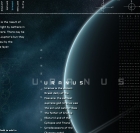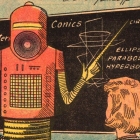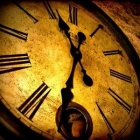-
 +19 +4
+19 +4We could detect a malfunctioning warp drive on an alien starship
Faster-than-light warp drives are theoretically possible to build, and if aliens are using them, we should be able to detect the gravitational waves produced when one goes wrong
-
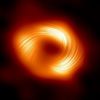 +31 +5
+31 +5Magnetic Fingerprints of The Milky Way's Black Hole Revealed in Stunning Image
The magnetic fields that spiral around our galaxy's supermassive black hole Sagittarius A* have now been revealed by twisted light.
-
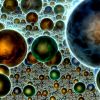 +38 +6
+38 +6Many physicists assume we must live in a multiverse – but their basic maths may be wrong
The universe appears to be fine-tuned for life to evolve.
-
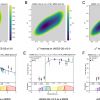 +4 +1
+4 +1James Webb Space Telescope finds possible evidence of dark stars
A trio of astrophysicists, two from Colgate University and the third from the University of Texas, has found evidence of dark stars courtesy of data from the James Webb Space Telescope. In their study, reported in Proceedings of the National Academy of Sciences, Cosmin Ilie, Jillian Paulin and Katherine Freese, analyzed three galaxies spotted by the JWST and how they might relate to dark stars.
-
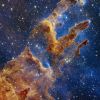 +33 +3
+33 +3Seven Amazing Accomplishments the James Webb Telescope Achieved in Its First Year
The James Webb Space Telescope, the largest and most sophisticated space observatory ever built, has been sending back images and data for almost a full year now—and in that time it has delivered a treasure trove of information about everything from stars and planetary systems in our own galactic neighborhood to distant galaxies that formed when the universe was a tiny fraction of its current age.
-
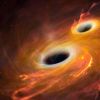 +22 +7
+22 +7Gravitational-wave background of the Universe
International consortium provides evidence of long gravitational waves, detected through a 15-year pulsar study.
-
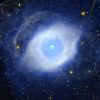 +28 +3
+28 +3The expansion of the universe could be a mirage, new theoretical study suggests
The expansion of the universe could be a mirage, a potentially controversial new study suggests. This rethinking of the cosmos also suggests solutions for the puzzles of dark energy and dark matter, which scientists believe account for around 95% of the universe's total energy and matter but remain shrouded in mystery.
-
 +23 +5
+23 +5Missing Stars Puzzle Astronomers: Could Intelligent Life Be the Cause?
Over a period of 70 years, thousands of stars have vanished from the sky; Which prompted a team of astronomers to shed light on this phenomenon .. and perhaps a (very weak) hope of uncovering traces of intelligent civilizations outside the planet.
-
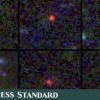 +26 +6
+26 +6Galaxies spotted by Webb telescope rewrite understanding of early universe
Observations by NASA's James Webb Space Telescope are upending the understanding of the early universe, indicating the presence of large and mature but remarkably compact galaxies teeming with stars far sooner than scientists had considered possible.
-
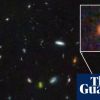 +4 +1
+4 +1Supermassive black hole at heart of ancient galaxy ‘far larger than expected’
A supermassive black hole discovered at the heart of an ancient galaxy is five times larger than expected for the number of stars it contains, astronomers say. Researchers spotted the immense black hole in a galaxy known as GS-9209 that lies 25bn light-years from Earth, making it one of the most distant to have been observed and recorded.
-
 +20 +3
+20 +3Betelguese’s Brightening Raises Hopes for a Supernova Spectacle
Even if you don’t know it by name, the red supergiant star Betelgeuse is one of the most familiar sights in the heavens above—a gleaming ruddy dot at the shoulder of the constellation Orion. Although already quite difficult to overlook, Betelgeuse has become even more eye-catching across the past few years because of major changes in its appearance—unexpected fluctuations in its brightness that remain poorly understood. In recent weeks, the star has at times shone more than 50 percent brighter than normal, drawing renewed attention from amateur sky watchers and professional astronomers alike.
-
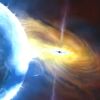 +28 +6
+28 +6Astronomers spot the biggest cosmic explosion ever seen, and it's 100 times the size of our solar system
The blast, which is 2 trillion times brighter than the sun, may have been caused by a supermassive black hole sending shock waves through a cloud of cosmic gas.
-
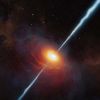 +27 +4
+27 +4Astronomers solve the 60-year mystery of quasars – the most powerful objects in the Universe
Scientists have unlocked one of the biggest mysteries of quasars – the brightest, most powerful objects in the Universe – by discovering that they are ignited by galaxies colliding.
-
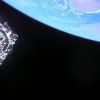 +19 +8
+19 +8Webb telescope discovers oldest galaxies ever observed
The James Webb Space Telescope has discovered the four most distant galaxies ever observed, one of which formed just 320 million years after the Big Bang when the universe was still in its infancy, new research said on Tuesday.
-
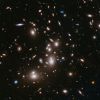 +24 +4
+24 +4Galaxy clusters yield new evidence for standard model of cosmology
Cosmologists have found new evidence for the standard model of cosmology—this time, using data on the structure of galaxy clusters. In a recent study published in Monthly Notices of the Royal Astronomical Society, a team led by physicists at the Department of Energy's SLAC National Accelerator Laboratory and Stanford University made detailed measurements of the X-ray emission from galaxy clusters, which revealed the distribution of matter within them. In turn, the data helped the scientists test the prevailing theory of the structure and evolution of the universe, known as Lambda-CDM.
-
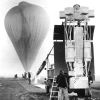 +15 +6
+15 +6How high-altitude balloons help unlock the cosmos
The recent episodes of jet fighters shooting down spy balloons has everyone talking about how they can be used for surveillance. But if anyone had bothered to ask an astronomer, they would know we’ve been attaching telescopes to balloons for decades — and the technique even represents the latest cutting edge in NASA research.
-
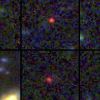 +2 +1
+2 +1James Webb Telescope discovers six massive 'universe breaker' galaxies
Astronomers have detected what appear to be six massive and very ancient galaxies, a discovery they say could upend our understanding of how galaxies formed at the very beginning of the universe. While the new James Webb Space Telescope has already spotted even older galaxies, it’s the size and maturity of these six apparent mega-galaxies that have stunned scientists.
-
 +15 +4
+15 +4All of Jupiter's Large Moons Have Auroras
Jupiter is well known for its spectacular aurorae, thanks in no small part to the Juno orbiter and recent images taken by the James Webb Space Telescope (JWST). Like Earth, these dazzling displays result from charged solar particles interacting with Jupiter’s magnetic field and atmosphere. Over the years, astronomers have also detected faint aurorae in the atmospheres of Jupiter’s largest moons (aka. the “Galilean Moons“). These are also the result of interaction, in this case, between Jupiter’s magnetic field and particles emanating from the moons’ atmospheres.
-
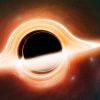 +19 +3
+19 +3Black holes may be the source of mysterious dark energy
When astronomers discovered that the universe is expanding at an accelerating rate, they theorized that some force must be pushing things farther apart and overcoming gravity, which should be slowing things down. That force was suggested to be dark energy, but no one has ever figured out from where it comes.
-
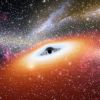 +16 +3
+16 +3Astronomers spot a rogue supermassive black hole hurtling through space leaving star formation in its wake
Supermassive black holes (SMBHs) lurk in the center of large galaxies like ours. From their commanding position in the galaxy's heart, they feed on gas, dust, stars, and anything else that strays too close, growing more massive as time passes. But in rare circumstances, an SMBH can be forced out of its position and hurtle through space as a rogue SMBH.
Submit a link
Start a discussion
